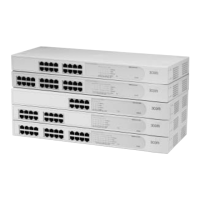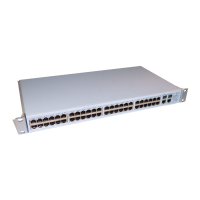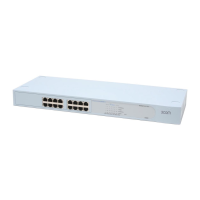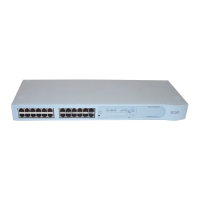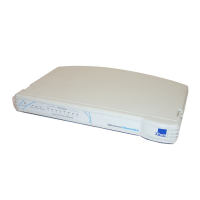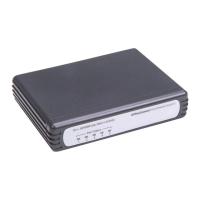DUA1640-5AAA02
5-6
C
HAPTER
5: M
ANAGING
THE
PS H
UB
Requirements for
Managing Over the
Network
When managing your stack over the network, you must remember that
(regardless of your method of management):
■
The hub or stack must be correctly configured with IP information.
You must make a direct management connection through the
console port to do this (or use a BOOTP server).
IP addresses are unique, no two hubs must have the same IP address.
If you have no previous knowledge of IP, refer to “IP Addresses” on
page 5-7
.
If you have a BOOTP server, it can automatically assign your network
equipment, including the PS Hubs, with IP information so that it can be
communicated with and managed over the network. Refer to the
documentation that accompanies your BOOTP server for more
information.
■
Any IP information configured for a hub in a stack can be used to
access the whole stack. If the stack is physically split in two, the IP
information remains with the hub and is used by its half; the other
half has no IP information so it becomes unmanageable over the
network. You can configure more than one hub in a stack with IP
information. We recommend you do this for the top and bottom
hubs to obtain redundant management capabilities (should the stack
split).
■
IP must be correctly set up for your management station.
■
You can manage the hub or stack over the network, through any of
the ports. However, for the communication to work over the
network, the port through which your communication reaches the
stack must be connected to segment 1 (either directly or indirectly)
of the hub with the IP address configured. If you are going to use
load balancing to configure your segments, it is a good idea to fix
this port to segment 1.
■
You can manage a mixed stack of PS Hub 40 and PS Hub 50 units.
If you have multiple PS Hub 50 units, only one of the hubs’ segment
switch will be active, refer to “Multiple PS Hub 50 Units in a Stack”
on page 2-4
.
